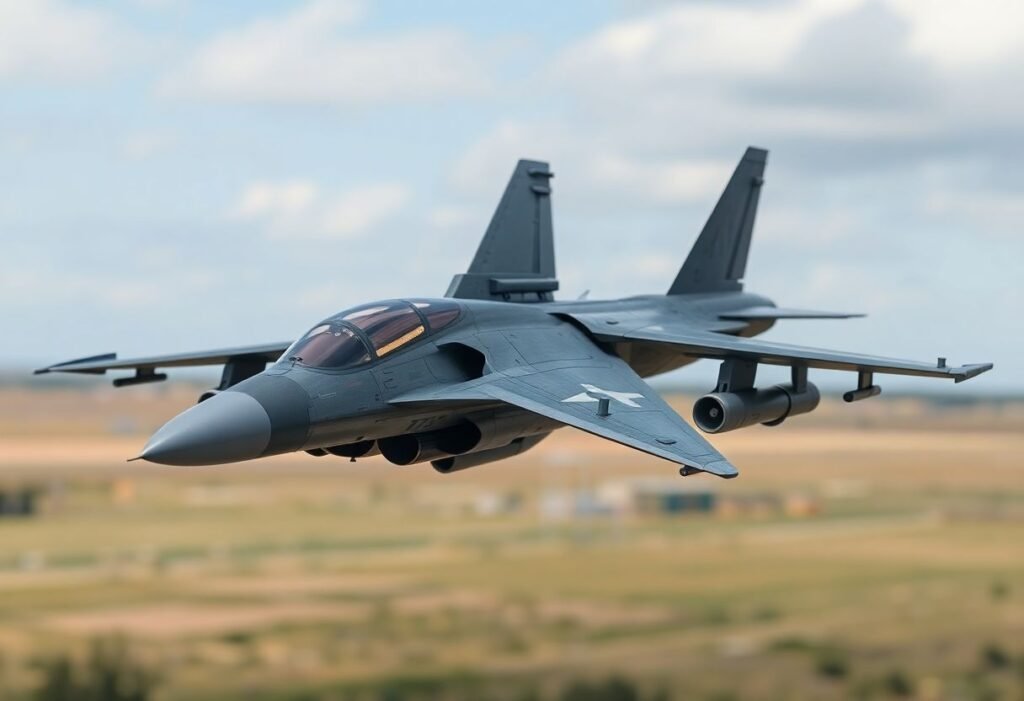General Atomics has recently showcased an innovative vision for the future of military aviation with its full-scale prototype of the Collaborative Combat Aircraft (CCA). This cutting-edge autonomous fighter is intended to play a critical role in enhancing the capabilities of air forces by introducing a fleet of affordable, expendable drones that effectively complement manned operations.
Transforming Military Aviation with Autonomous Technology
The introduction of the Collaborative Combat Aircraft marks a significant advancement in military aviation, presenting a paradigm shift in how air forces can operate. This autonomous platform is designed to work alongside human-piloted aircraft, effectively sharing the burden of combat operations. By utilizing AI and advanced robotics, the CCA enhances mission efficiency and reduces the risks faced by crewed aircraft. As defense technology continues to evolve, integrating such systems will be essential in maintaining a tactical advantage on the battlefield.
The Role of Expendable Systems in Modern Warfare
Expendable drones such as the CCA offer several strategic advantages, including cost-effectiveness and operational flexibility. These platforms can be deployed in high-risk environments without the typical concerns associated with piloted aircraft. In many scenarios, the ability to employ expendable units allows military strategists to execute missions that would traditionally be deemed too dangerous for human crews. As military operations become increasingly complex, incorporating robust autonomous systems like the CCA is critical for future readiness.
Design Features of the Collaborative Combat Aircraft
The design of the CCA reflects a deep understanding of modern combat requirements. Engineered to be both agile and stealthy, the aircraft can navigate diverse operational environments with minimal detection. It incorporates advanced sensors and communication systems that enable effective data sharing with other units in real-time, ensuring that both autonomous and crewed platforms remain synchronized during operations. This level of integration will be vital for success in future conflicts.
Implications for Air Force Strategy
The CCA represents a shift in how air forces strategize and plan for future conflicts. As autonomous capabilities become more integrated into military doctrines, traditional roles of pilots and aircraft will likely transform. Training programs will need to adapt to prepare crews for collaboration with AI-driven platforms and manage operations that include both human and machine elements. This evolution emphasizes the need for a holistic approach to military training and mission execution moving forward.
Collaborative Technologies Enhancing Defense Operations
At the heart of the CCA’s functionality is its collaborative framework, which allows it to engage in collective missions with other aircraft. This collaboration extends beyond mere assistance; it involves complex tactical planning capabilities. Such technologies enable each unit to operate within a cohesive network, sharing intelligence and coordinating actions efficiently, thereby improving the overall mission success rates. The future of military engagements will heavily rely on these interconnective systems.
Looking Ahead: The Future of Uncrewed Airpower
The vision presented by General Atomics with the Collaborative Combat Aircraft lays the groundwork for the future of uncrewed military operations. As advancements in AI and robotics continue, the potential applications for autonomous aircraft will expand significantly. The CCA is just one example of how military forces are embracing transformative technologies to reshape air combat capabilities. Future developments will likely further enhance the strategic landscape, ensuring that air forces remain effective and resilient in the face of emerging threats.
Disclaimer: This article provides a brief overview of General Atomics’ Collaborative Combat Aircraft and is intended for informational purposes only. The content reflects current understandings in military technology and may evolve as developments occur.





















